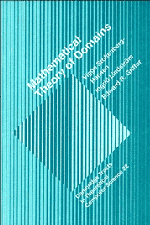Preface
Published online by Cambridge University Press: 05 June 2012
Summary
A domain is a structure modelling the notion of approximation and of computation. A computation performed using an algorithm proceeds in discrete steps. After each step there is more information available about the result of the computation. In this way the result obtained after each step can be seen as an approximation of the final result. This final result may be reached after finitely many steps as, for example, when computing the greatest common divisor of two positive integers using the Euclidean algorithm. However, it may also be the case that a computation never stops, in which case the final result is the sequence of approximations obtained from each step in the computation. The latter situation occurs by necessity when computing on infinite objects such as real numbers. Thus an appropriate model of approximation can provide a good model of computation.
To be somewhat more technically precise, a domain is a structure having one binary relation ⊑, a partial order, with the intended meaning that x ⊑y just in case x is an approximation of y or y contains at least as much information as x. We also require that a domain should include a least element modelling no information. This is not necessary, but is useful for establishing the existence of fixed points. To model infinite computations we require a domain to be complete in the sense that each increasing sequence of approximations should be represented by an element in the domain, that is, should have a supremum.
- Type
- Chapter
- Information
- Mathematical Theory of Domains , pp. ix - xiiPublisher: Cambridge University PressPrint publication year: 1994

